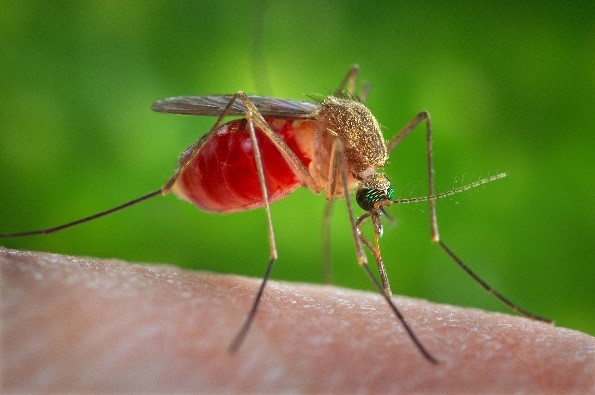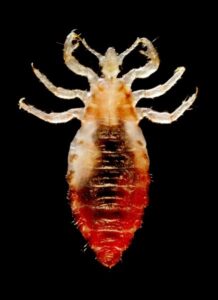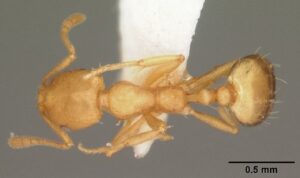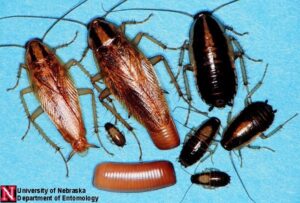Introduction
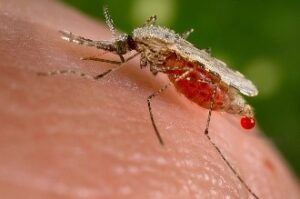
Since the establishment of the union, the UAE has experienced rapid population growth and urbanization, which have influenced the biodiversity of insects. Researchers confirmed the link between the emergence of arboviruses and urban growth in the UAE. Recently, mosquito biodiversity was measured and species composition was surveyed in peri-urban and protected, natural sites.
Mosquitoes belong to the family Culicidae. They are slender insects with mouthparts that are piercing-sucking in females (sucking blood) and sucking only in males (feeding on nectar). It is believed that mosquitoes evolved 165 million years ago and were first established in South Africa. Mosquitoes are among the deadliest disease vectors for humans, as they have contributed to killing millions of people for thousands of years and are still killing many. The physiological adaptation of mosquitoes and their ability to transmit viral and parasitic diseases without being affected by these pathogens make them vectors of dangerous diseases.
The family of mosquitoes is one of the most important species of the order of Diptera (two-winged insects) from a medical point of view. This family includes about 3,500 species. Three sub-families belong to the family Culicidae:
1- Subfamily Anophelinae: it contains 3 genera, the most important of which is the genus Anopheles, whose species mainly transmit malaria. Two tribes follow this subfamily: Anophilini, which transmits malaria in humans, and Culicini, which transmits malaria in birds.
2- Subfamily Culicinae: it contains 37 genera, the most important of which are Culex and Aedes, as their species transmit many diseases such as yellow fever, dengue fever, Rift Valley fever, and others.
3- Subfamily Toxorhychitinae: It includes only one genus, Toxorhynchites, whose species do not transmit diseases but are important in biological control, as their larvae prey on disease-carrying species such as Anopheles, Aedes, and Culex.
Eleven species of mosquito (Family Culicidae: Order Diptera) have been recently recorded in the UAE. The first 5 species are the most commonly encountered.
- Ochlerotatus caspius (Pallas) (formerly Aedes caspius) – Saltmarsh mosquito
- Anopheles culicifacies Giles
- Anopheles stephensi Liston
- Culex quinguefasciatus Say (formerly Culex fatigans and Culex pipiens quinquefasciatus) – Southern house mosquito
- Culex perexiguus Theobald
- Culex bitaeniorhynchus Giles
- Culex laticinctus Edwards
- Culex sinaiticus Kirkpatrick
- Culex sitiens Wiedmann
- Culex tritaeniorhynchus Giles
- Culiseta longiareolata Macquart
- Identification of Mosquito Species
- Mosquitoes Genera
- Aedes Mosquitoes
- Anopheles Mosquitoes
- Culex Mosquitoes
Click above to learn more about mosquito species identification and detailed information about the three mosquito genera (general description, life cycle, common characteristics, and health implications).
Identification of Mosquito Species
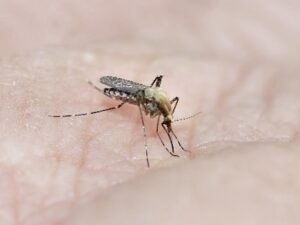
Ochlerotatus caspius (Pallas) Credit: Hans Hillewaert |
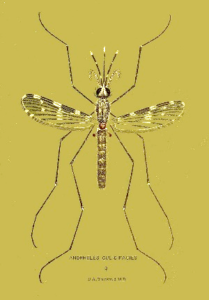
Anopheles culicifacies Giles
|
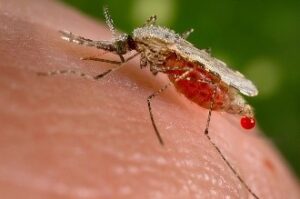
Anopheles stephensi Liston
|

Culex quinguefasciatus Sya
|
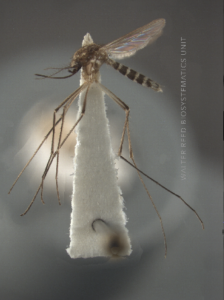
Culex perexiguus Theobald
|

Culex bitaeniorhynchus Giles
|
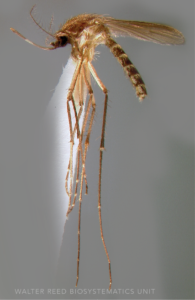
Culex tritaeniorhynchus Giles
|
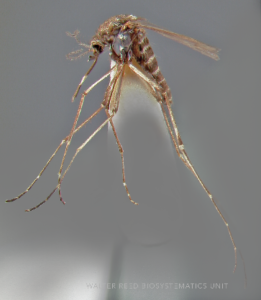
Culex sitiens Wiedmann
|
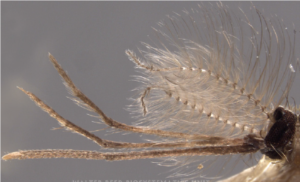
Culex laticinctus Edwards
|
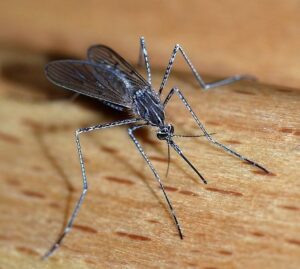
Culiseta longiareolata Macquart Credit: Alvesgaspar |
Mosquito Genera
- Aedes Mosquitoes
- Anopheles Mosquitoes
- Culex Mosquitoes
1- Aedes Mosquito (Biting Nuisance Species)
A. aegypti, A. albopictus, and A. caspius
(A. aegypti is not reported from UAE)
General Description
Mosquitoes have four distinct developmental stages: egg, larva, pupa, and adult
Eggs:
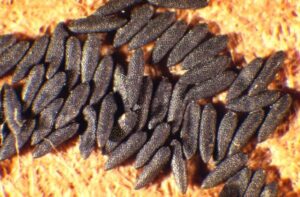
Eggs. |
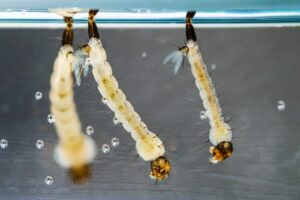
Larvae |
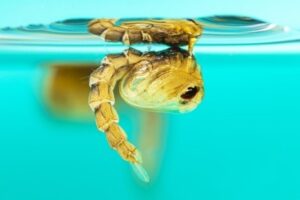
Pupa |

Adult |
Life Cycle and Common Characteristics

Life cycle takes about 7-10 days for an egg to
develop into an adult mosquito.
- Females lay their eggs as single units and deposit them on moist areas such as rock surfaces, moist earth, and inside walls of tree holes or containers above the water
- Eggs are almost transparent when first laid, but gradually darken to brown or black as they
- Eggs are elongated and oval in There are often fixed geometric shapes on its outer wall
- Eggs stick to container walls like glue. Eggs are able to withstand desiccation and can survive long periods until they are submerged in water and then begin to Eggs can survive dry conditions for up to 8 months.
- Mosquitoes only need a small amount of water to lay eggs.
- Larvae typically feed on the bottom of the
- in the water (aquatic).
- Larvae can be seen very active in the water (called “wigglers”).
- The larva goes through four stages until it reaches the pupal
- Larvae breathe air from openings (spiracles) at the posterior end of the body, through a structure termed a
- Larvae hang below the water surface with the tip of the siphon exposed to the
- Aedes species may complete larval development in as little as 4-5
- After the 4th larval instar mosquitoes’ larva complete its development, it molts into a non-feeding but highly mobile stage called the pupa.
- The pupa breathes through a pair of tube-like organs located in the ‘head’ end of the comma-shaped body.
- Pupae live in the water.
- The duration of the pupal stage is generally 2-3 days.
- After emerging from the pupa, the adult mosquito rests on the water surface for a short time allowing its wings and body to dry, before flying off in search of a They are usually near a breeding site at dusk.
Adult females bite people and animals in the early morning and before sunset, and they do not make a loud buzz and tend to crawl under clothes to bite.
- Females need blood to produce eggs. Males feed on plant juices and fruit nectars near the breeding site.
- Adult length is 5 mm.
- After feeding, female mosquitoes look for water sources to lay eggs.
- They don’t fly long distances. They only fly within a few blocks.
- aegyptimosquitoes live indoors and outdoors, while A. albopictus live outdoors.
- The life span of adult mosquitoes is not well Some species apparently live one or two months, although under unfavorable conditions this period may be greatly reduced.
- Adults that hibernate during winter may live for six months or more
Damage and Medical Implications
1- Yellow Fever:
It is a serious and deadly disease that is transmitted by female mosquito species such as:
- Aedes aegypti spreads globally in cities and on coasts.
- Aedes africanus lives in the forests of Africa and flies at night.
- Aedes simposoni lives in the forests of Africa and flies during the day.
There are two types of disease (1) yellow fever in cities and (2) yellow fever in forests. The first disease is epidemic and concerns only humans, and the second is non-epidemic and depends on the infection of other animals such as monkeys.
The disease is endemic in the continent of Africa and is carried by the females of the aforementioned mosquitoes. The disease is highly fatal, especially in places where people do not have immunity to the disease. The yellow fever virus was repeatedly isolated from mosquitoes and was also isolated from monkeys. With the exception of Sudan, the disease does not exist in any Arab country.
Symptoms of mild infection appear within a week and are represented by high fever, headache, mild general pain, and dizziness. In cases of severe infection, two manifestations of the disease are observed. In the first manifestation, infected individuals appear with a rapid rise in body temperature, headache, dizziness, and muscle pain. In the second manifestation, high fever, slow heart rate, and various symptoms of bleeding occur. In fatal cases, profuse vomiting of dark brown or black materials followed by collapse and death occurred.
2-Anopheles Mosquito (Potential Malaria Vector)stephensi and A. culicifacies
General Description

Eggs. |

Larvae |

Pupa |

Adult |
Life Cycle and Common Characteristics

Lide cycle usually takes 10–14 days for an egg
to develop into an adult mosquito.
- Adult, female mosquitoes lay individual eggs one at a time directly on or near water bodies.
- The eggs float on the surface of the water.
- Females lay 50–200 eggs at a time.
- Egg resembles a boat in its shape (elongated and oval). It is wide in the middle and somewhat pointed at the ends.
- They are almost transparent when first laid, but gradually darken to brown or black as they
- Eggs do not tolerate drying out.
- Larvae hatch from eggs, and normally feed at the surface of the water.
- Larvae breathe air from special organs (spiracles) at the posterior end of the body, generally through a structure termed a They hang below the water surface with the tip of the siphon exposed to the air. Anopheles, whose larvae do not have a siphon or breathing tube lay parallel to the surface of the water to breathe.
- Larvae molt four times during this stage before becoming pupae.
- During favorable conditions, Anopheles species may complete larval development in 7-10 days
- Pupae live in water and do not eat during this stage.
- The pupa breathes through a pair of tube-like organs located in the ‘head’ end of the comma-shaped body.
- The duration of the pupal stage is generally of 2-3 days.
- Adults emerge from a pupa and fly away.
- Length of the adult is 5 mm.
- The adult female selects an appropriate larval habitat when she is ready to deposit
- Adult female mosquitoes bite people and animals in the evening and early morning.
- Female mosquitoes need blood to produce eggs.
- Adult females prefer to feed on people or animals (cattle).
- Some males fly in large swarms, usually around dusk, and the females fly in the swarms to mate.
- After blood feeding, the female rest for a few days while the blood digests and the eggs develop.
- After the eggs develop, the female lays them in the water sources.
- Adults generally don’t fly more than 2 km from their larval habitats.
- Adults are attracted to dark, sheltered areas for resting during the daytime.
Damage and Medical Implications
1- Malaria:
Malaria disease, which is still responsible for a great deal of illness, disability, and even premature death among human beings, is transmitted by female mosquitoes of the genus Anopheles. Malaria is caused by a primary parasite of the genus Plasmodium, of which there are four species that cause four closely related diseases, all of which are called malaria. All types of this disease include certain cases of shiver and chills, then a fever followed by periods without shivering. Please note that UAE was certified by the WHO to be free of malaria transmission in 2007.
2- Meningitis Encephalitis
This disease is caused by a virus that is transmitted to animals by females of the genus Anopheles, and the disease is more common in horses, and birds act as carriers of the disease.
3- Culex Mosquito (Biting Nuisance Species)
Culex pipiens, C. quinquefasciatus, and C. tarsalis
General Description
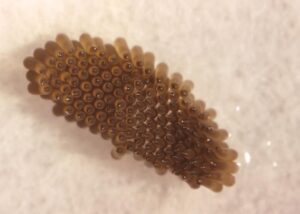
Eggs. |
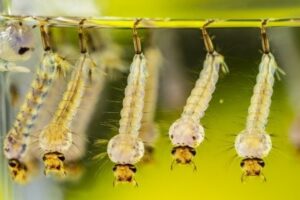
Larvae |
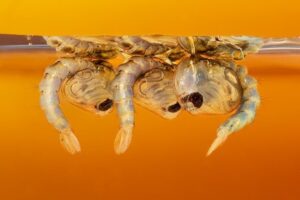
Pupa |
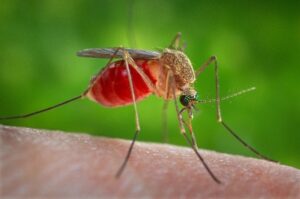
Adult |
Life Cycle and Common Characteristics
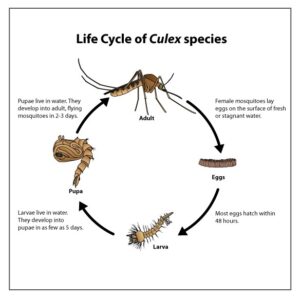
Life cycle takes about 7-10 days for an egg to develop into an adult mosquito.
- Females lay eggs (3 mm in length) on the surface of fresh or stagnant water. Water sources can include barrels, unmaintained swimming pools, creeks, ditches, and marshy areas.
- A female Culexmosquito lays eggs one at a time in the form of blocks resembling the shape of a boat in which the eggs adhere to an adhesive substance, and the egg boat contains approximately 400 eggs, and it is concave from the top. The eggs are located in it in a vertical position relative to the surface of the water, and the pointed side is the upper one.
- Eggs stick together to form a raft of 100 to 300 eggs. The raft floats on the water’s surface.
- Eggs cannot withstand desiccation and are usually associated with permanent or semi-permanent water They will hatch after about 2 days in water and without water, they desiccate and die.
- Larvae hatch from mosquito eggs and feed in the middle range below the surface of the water.
- Larvae can be seen in the water. They are very active and are often called “wigglers.”
- They feed on a variety of things found in the water.
- Larvae shed their skin (molt) several times during this stage.
- Larvae may require at least 7-10 days to complete their development.
- Pupae live in water. Pupae do not have external mouthparts and do not feed during this stage.
- The duration of the pupal stage is generally 2-3 days.
- Adult (5 mm in length) emerges from a pupa and flies away.
- Female mosquitoes bite people and animals at night and day, in dark rooms, and during the cold.
- Mosquitoes need blood to produce eggs.
- After blood feeding, female mosquitoes look for water sources to lay eggs.
- Culexmosquitoes don’t fly long distances (up to 3.2 km).
- Some Culex mosquitoes prefer to live near and bite birds. They bite people when other animals are not nearby.
- Mosquitoes live outdoors or near homes.
Damage and Medical Implications
1- Rift Valley Fever
The disease is caused by a virus called Phlebo and belongs to the Bunyaviridae family. It is a large group of viruses transmitted by arthropods such as mosquitoes and ticks. It is isolated from several wild animals and the strains of this virus are immunologically similar. This disease is transmitted among animals by female Culex mosquitoes, as they abound in humid areas with frequent seasonal rains.
Goats, sheep, cows, buffaloes, camels, and humans are a major natural hosts of the disease. Some wild animals such as antelopes, monkeys, rodents, dogs, and cats are considered natural reservoirs of the disease. The disease has spread, starting with the continent of Africa, especially in Kenya, Uganda, Zimbabwe, South Africa, and Mozambique. It appeared in Sudan in 1973 and in Egypt in 1977, where it infected about 20,000 people, of whom 600 died. It also appeared in Yemen and Saudi Arabia in 2000, when it recorded 109 deaths in Yemen and 121 deaths in Saudi Arabia.
Humans become infected through direct contact with infected animals, their meat, or samples taken from infected animals for the purpose of laboratory testing. The symptoms of the disease in humans are similar to the symptoms of influenza and include fever, headache, runny nose, joint and muscle pain, miscarriage of pregnant women, and sometimes complications such as fatal hemorrhagic fever, neurological symptoms, and retinitis with temporary blindness occur.
The incubation period in animals is very fast and ranges between 12-96 hours and in humans between 4-6 days. Symptoms associated with the disease in adult animals, including cows and sheep, include fever, lethargy, loss of appetite, ataxia, purulent runny nose, and bloody diarrhea. As for young animals of young age, such as lambs and calves, the symptoms are more than severe and only an increase in the number of deaths is observed by more than 30%.
2- Japanese Encephalitis
This disease is transmitted by Culex tritaeniorhyncus female mosquitoes, and this disease has no specialized treatment, and if one of the injured can be saved, he continues to suffer from brain damage as a late effect. The virus that causes this disease has increased and until recently this disease remained the most threatening disease in Japan until measures were taken to eliminate mosquito larvae in their places of residence, especially in rice fields, by developing water control standards such as frequent drainage, irrigation obstacles, and continuous irrigation
3- Meningitis Encephalitis
This disease is caused by a virus that is transmitted to humans by female Culex mosquitoes of the sexes Culex and Aedes. The disease causes inflammation of the membranes of the brain and the nervous system, and its most important symptoms are a sudden rise in the patient’s temperature, accompanied by headache, lethargy, an increase in the rate of breathing and pulse, with the general dissolution of the body, stiffness in the neck, and difficulty in speaking. A coma may occur when the disease intensifies.

